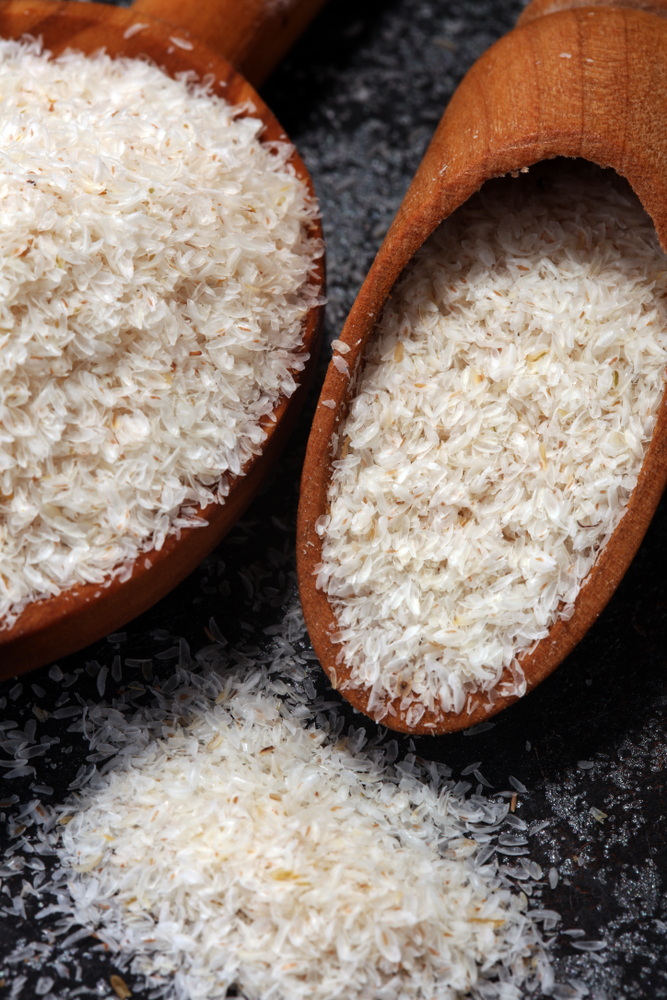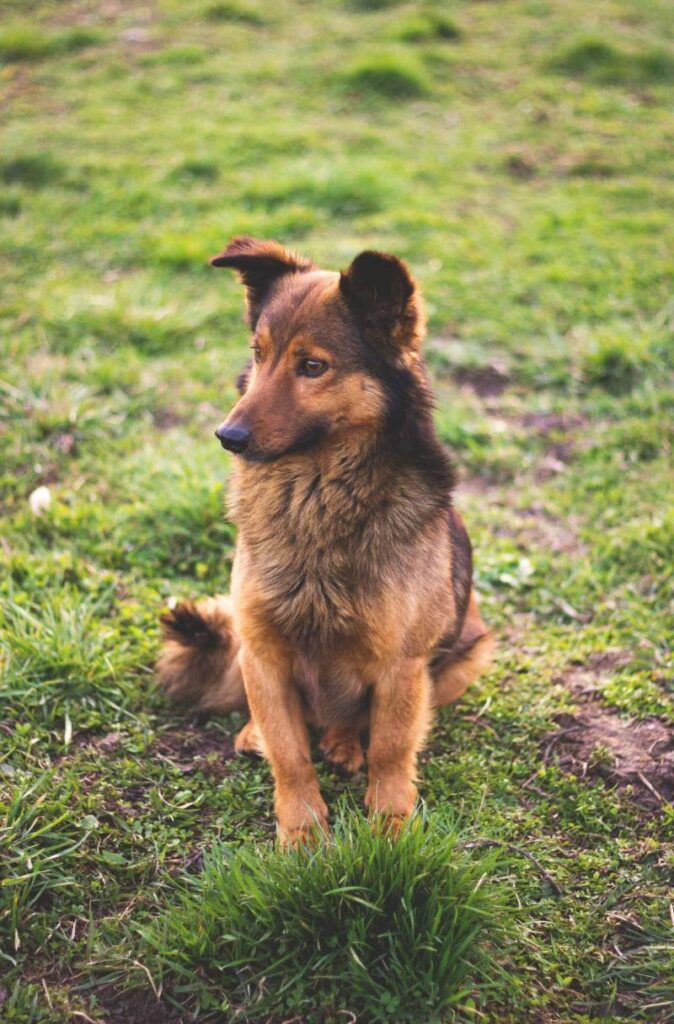When poo deviates from normal, it’s a rather telling and pungent-smelling sign that there’s trouble brewing in their digestive system. You can’t see inflammation or ask where it hurts, but poop (or lack thereof) clues you into our pet’s digestive health. Once you know, you can take simple steps to get them back to normal.
On The Agenda
Stool can be hard to sort out (literally), since there’s color, consistency, content, and coating to contend with. When your dog is healthy, his poop should show it, which is why it’s important to know what’s “normal” for stool.
So what is the gold standard, the winningest poop?
- chocolate brown in color
- shaped like a log
- firm consistency and a bit moist
- passed daily
The volume of waste should reflect the amount of food they consume which, of course, depends on their diet. Now that we have a “normal” poo standard, we can more easily identify when irregularities come about.
Colors of the (Poop) Rainbow & What They Mean
A few things to take note of when it comes to the color of poo.
- Some variation in color is actually normal, but certain colors are always worth looking at more closely. If you shake up your pet’s diet, color changes are also possible if your pet food uses any dyes (personally, not a fan).
- Any deviation from brown that lasts longer than one or two stools should raise flags.
Now down to the nitty-gritty with this poop color chart.
Brown
Normal & Healthy

Green
May be bile indicating an issue with the liver or the flow of bile

Yellow
It can be a simple reaction to something they ate or a sign that they passed stool too quickly (the bile didn’t have time to reabsorb); when accompanied by an acidic smell, it can mean liver distress and should be addressed with your vet immediately (this is not a drill)

Black & Tarry
Blood was digested, which can mean bleeding in the upper digestive tract (stomach or small intestine); the cause of bleeding could vary from swallowing blood from a bloody nose to an ulcer or tumor

Red Streaks
Bleeding in the lower part of the digestive tract (large intestine or rectum); cause of bleeding could vary from your dog straining to pass dry, constipated stool to more serious issues like colitis, cancer, colon ulcers, or hemorrhoids

White Specks
Can be signs of parasites; tapeworms look like little white grains of rice, and roundworms look like linguini

Grey & Greasy
Issues with pancreas, liver, or gallbladder

Most poo issues work themselves out in a day or two, but beyond that, a call or trip to the vet may be warranted. Your dog’s attitude is also a good indicator of whether the stool issues are serious. If your cat or dog becomes lethargic or stops eating and drinking, it’s more cause for concern, and it would be best to contact your veterinarian, who can evaluate a sample (you’ll want to grab a scooper).
Consistent Consistency is Key for Poop
There’s a sliding scale for stool, ranging from entirely liquid to very hard/dry. You want your pet to stay away from either end. The stool of a healthy animal is firm and holds its form when picked up.

Loose stools in cats and dogs (5-6 on the scale) can be blamed on the colon (sorry, colon). One of the colon’s main jobs is to absorb water from the foods digested to firm up the stool. An inflamed colon can’t absorb water as well, so stool sneaks past while it’s still watery and loose (several times a day, in fact).
Causes of loose stool in cats and dogs could be from a few things:
- A result of parasites
- Food intolerance
- Lack of fiber
- An out-of-balance microbiome
If your dog or cat has loose stool, it can cause issues with the anal glands. Adding fiber to your pet’s diet can help stimulate the colon, so it’s able to absorb more water and firm up your pup’s poop, and express those anal glands naturally and regularly so there’s no scooting.

If fiber is added and loose stool persists or comes back, it’s because the colon is still inflamed.
The next step would be to investigate whether parasites or food intolerance are to blame. Also, keep in mind that just like people, stress and anxiety can impact the digestion and elimination systems.
Make note of whether the problem clears up on its own, because generally if it does in a day or so, your pet may have had stress poos. Being a mild symptom, the soft stool is less of a concern than a cat or dog with diarrhea.
Dog or cat diarrhea (7 on the scale) should be watched a bit closer because it puts your pet at risk of dehydration. Be sure to give them plenty of water to combat this. Like soft stool, diarrhea can be caused by several factors.
It can be attributed to…
- Change in food, especially for a dog with a sensitive stomach
- gastric distress
- stress
- eating things they shouldn’t
- an out-of-balance microbiome
An urgency to poop is oftentimes an irritation of the anus or rectum or pending diarrhea (so hustle to grass).
Constipation is on the other end of the poo scale (1) but is still equally uncomfortable for your pet. Consistency and frequency will help identify constipation. Small, hard, dry poop passed less than once a day indicates a constipated cat or dog. If your pet is straining to go, it’s also a red flag.
If you don’t know how to tell if a cat is constipated, check whether their food intake has slowed. Or, if you don’t scoop daily, you may want to start if you’re concerned they may not be going every day.
Constipation can be caused by dietary issues. Either their food is too difficult for them to digest, or they lack fiber. That pesky colon and water imbalance also cause it. When stool is extremely hard, the body took all the water out in an attempt to hydrate itself. Add more water to your pet’s diet because they’re likely dehydrated and psyllium husk to help aid water balance in the colon.

Contents and Coating
Coating is easy enough for a pet parent to spot because it will leave residue on the ground when you pick up your pets’ poo. It should never be on stool though, so if it is, it’s likely mucus that lines the gastrointestinal tract.
This is a sign of gastric upset and inflammation, and because the cause of this upset can vary, it’s best to see a vet if it persists beyond 24 hours and is paired with vomiting and diarrhea.
Contents of poo are a bit more involved. No pet parent really wants to get their hands dirty rummaging through the contents of poop, but you do what you gotta do for your four-legged family. (You can also send it to your vet for them to rummage through.) If any of these things find their way into your pet’s stool, you’ll want to follow up.

Flecks of white, as previously mentioned, can mean worms if it’s found in a fresh pile of poo. Excessive amounts of grass may have been your pet’s attempt at helping his GI upset.
To narrow down the upset, you may want to start troubleshooting with the following:
- Over-eating, especially if they’re free-fed
- Eating things they shouldn’t aka your dumpster divers
- Clumps of hair found in poo may mean overgrooming due to stress or allergies
- The possibility of food intolerance
- Undigested food means your carnivore isn’t getting all the nutrients they need out of the food.
- Vegetables and fruits are most often found. As carnivores, they rip, tear and gulp their food, so high cellulose like fruits and vegetables don’t get broken down before swallowing (humans can grind their food, which breaks it down before it even gets to the stomach).
Dogs also don’t have a lot of salivary amylases to break down fruits and vegetables the way humans would (we can immediately begin digestion of starch and sugars while chewing) and cats have none. Because they have so little salivary amylase in their mouth, dogs rely on their pancreas to break down these complex starches and sugars, and as you can see (literally), they don’t have a 100% success rate.
Consider sneaking a peek at the contents of poo from time to time to gain insight into their digestive health.

Keeping Your Pet’s Bowel & Gut Health In Check
The color, consistency, coating, and content of poo all help to identify digestive distress. Symptoms manifest in poo to tell pet parents that something just isn’t right. Really, poo deserves our thanks because we can’t see inflammation or ask our pet where it hurts.
Since bowel and anal gland health are connected to digestive health, these signs are really a call to action to prioritize our pet’s gut health starting with their the microbiome.
Add Daily Probiotics & Prebiotics
Bloating, foul gas, even diarrhea, are just some of the symptoms attributed to an imbalanced gut microbiome.
The microbiome is a complex colony made up of trillions of microorganisms, including bacteria. They live in your dog’s ears, skin, mouth, and upper respiratory tract, but most of them live in your dog’s digestive system. The bacteria benefit other bacteria, and in turn, benefit your dog.

A Balanced Gut Can…
- Keep bad bacteria (like salmonella) in line
- Make vitamins like B and thiamine
- Digest food more effectively, especially tough ones like veggies
- Help the body cope with external stressors
- Support immune function
- Affect mood
To keep your pet’s microbiome balanced, you need enough beneficial kinds of bacteria like probiotics and prebiotics to feed probiotics in your pet’s gut to outnumber the bad. When that happens, you’ve got a healthier and happier pet.
Keep Slippery Elm On Hand
Slippery elm is a versatile single herb that can be used to ease occasional digestive upset, including diarrhea and loose stool. You might think of it as a digestive lozenge able to coat the entire length of the digestive tract.
As a mucilage, slippery elm is able to lubricate the protective layers of the bowel, which guards the inflamed mucous membranes against further damage, allowing the gi tract to heal.

And If You Need Advanced Support
If your dog rarely if ever has a solid poop, or your kitty is regularly constipated, these can all be signs of a larger, ongoing g.i. issue. There are simple solves for these pets, though. It starts with what’s in the bowl– changing your carnivore’s diet if you aren’t already feeding a species-appropriate diet. Then, add a combination of herbs to diminish ongoing distress to whether inflammation is in the stomach, intestine, colon, or perhaps the whole g.i. tract.
And if you’re unsure whether your dog would benefit from one, the other, or maybe all three, you can take the quiz for a personalized recommendation.
Share this Post

Dr. Chris Besent
Chris Bessent, DVM, MSOM, Dipl. OM, L.Ac. has over thirty years of experience in veterinary medicine including certificates in veterinary acupuncture, veterinary chiropractic and veterinary Chinese herbology. Imbued with Eastern philosophy and the knowledge that food is the foundation of health, Dr. Bessent also received her degree in veterinary nutrition and began to formulate recipes fit for a carnivore from nothing but whole foods. Currently, she divides her time between the Simple Food Project and Herbsmith, both of which are owned and operated out of her facilities in southeastern Wisconsin.

Kayla Behling - Editor
Kayla is the Content Editor for Herbsmith. She has a cat named Professor Cat-Faced Meowmers, who goes by Kitty, and a goof of a dog, named Duck. She stays busy biking trails, playing board games, and searching for the next best craft beer.




